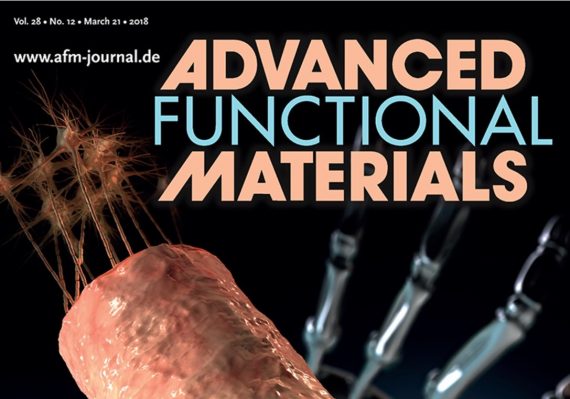Drs. Jack. W. Judy, Christine E. Schmidt, Kevin Otto and co-workers paper entitled, “Neural Interfaces: Tissue‐Engineered Peripheral Nerve Interfaces,” was featured in the special issue of Advanced Functional Materials Solutions to Engineering the Neural Interface.
Judy, Schmidt and Otto along with co-workers Benjamin S. Spearman, BME Ph.D. student; Sahba Mobini, BME postdoctoral researcher; James B. Graham, BME postdoctoral researcher; Matthew D. McDermott, BME Ph.D. student; and Vidhi H. Desai, Neurotechnology researcher at Abbott, review the latest peripheral nerve interfaces, peripheral nerve tissue engineering and the intersection of these fields to create regenerative peripheral nerve interfaces.
Research on neural interfaces has historically concentrated on the development of systems for the brain; however, there is increasing interest in peripheral nerve interfaces (PNIs) that could provide benefit when peripheral nerve function is compromised, such as for amputees. Efforts focus on designing scalable and high‐performance sensory and motor peripheral nervous system interfaces. Current PNIs face several design challenges such as undersampling of signals from the thousands of axons, nerve‐fiber selectivity, and device–tissue integration.
To improve PNIs, several researchers have turned to tissue engineering. Peripheral nerve tissue engineering has focused on designing regeneration scaffolds that mimic normal nerve extracellular matrix composition, provide advanced microarchitecture to stimulate cell migration, and have mechanical properties like the native nerve. By combining PNIs with tissue engineering, the goal is to promote natural axon regeneration into the devices to facilitate close contact with electrodes; in contrast, traditional PNIs rely on insertion or placement of electrodes into or around existing nerves or do not utilize materials to facilitate axon regeneration actively.
This paper presents the state‐of‐the‐art of PNIs and nerve tissue engineering, highlights recent approaches to combine neural‐interface technology and tissue engineering, and addresses the remaining challenges with a foreign‐body response. With these devices, axons regenerate into a hydrogel‐like environment that allows them to interface with electrodes intimately. This technology could ultimately be used to control robotic prostheses.
